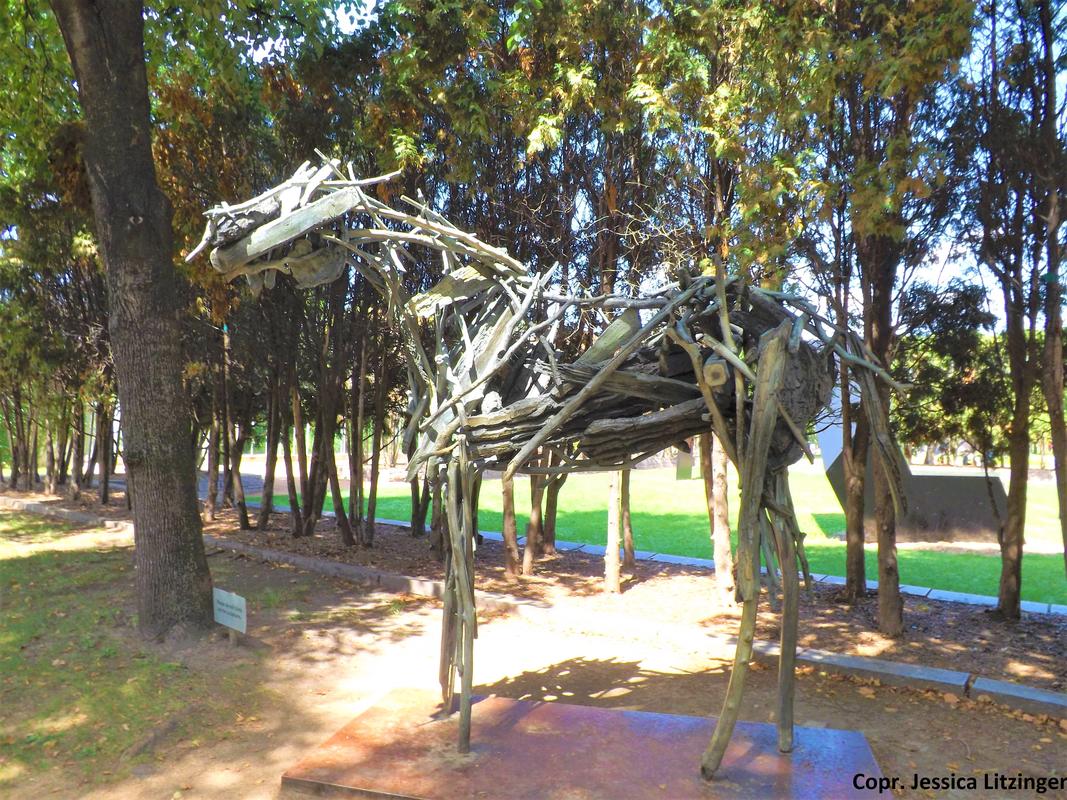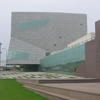More about Woodrow

Contributor
Deborah Butterfield created another one of her hauntingly skeletal, self-portrait horses in Woodrow but ended up naming it after her father-in-law.
Maybe not so much a self-portrait… But Woodrow still stands as an astounding example of Butterfield’s artistic goal. Depending on the season, Woodrow, like any good horse, has a vastly different personality and visibility. In the Minnesota summer, Woodrow’s smoky grey coloring stands him in stark contrast with the blooming, green shrubbery surrounding him. In the winter, Woodrow blends in with the snow, becoming immersed, and nearly invisible, in the snowy landscape. The isolation in which Deborah Butterfield places these self-contained creatures makes horses like Woodrow “ghosts” of horses and even his own environment.
Woodrow was originally “drawn” by Deborah Butterfield with sticks and pieces of wood. Butterfield likens this process of building her sculptural horses with training, or breaking in, her real horses in Montana since she must tame the wilderness to create both. Once this drawing, or building, of Woodrow was completed, Butterfield cast each individual piece of wood in bronze, melting away the wood to finish “taming” her horse. The disparate pieces are then reassembled and welded together to create Woodrow. Butterfield uses her own patina to create the illusion that each element is an actual piece of wood, which of course its ancestor was. Woodrow’s “wood” structure is so realistic that many visitors to the Minneapolis Sculpture Garden believe he is a stick figure horse, including me for my entire childhood.
Woodrow was commissioned for the Sculpture Garden in 1988. His placement among the bushes of the garden creates a perfect example of Butterfield’s mission with these horse “ghosts”. Traditionally, her sculptures were an attempt to bring the natural world into the art gallery - this was when she brought mud and stick horses inside. Woodrow may be the opposite but is just as striking. His “sticks” make him appear natural in his environment and this creates a majestic juxtaposition between the natural and the fabricated. The gentle tilt of Woodrow’s bronze, stick head gives him an inquisitive look, as if asking his creator why she placed him in such a harsh environment. But no matter how realistic his wood skeleton appears, his bronze shell helps him to withstand, and his viewers to appreciate, the extremes of Minnesota’s wild, untamed climate.
Sources
- Jenkins, Janet. “Deborah Butterfield, Minneapolis Sculpture Garden.” Walker Art Center. 1998. Accessed April 10, 2017. http://www.walkerart.org/collections/artworks/woodrow
- “Deborah Butterfield.” Electronic Visualization Laboratory. Accessed April 14, 2017. https://www.evl.uic.edu/mariar/WAC/MSG_ARTISTS/ref_msg_butterfield.html
- Clemans, Gayle. “Deborah Butterfield’s contemplative horses at Greg Kucera.” Seattle Times. June 9, 2011. Accessed March 15, 2017. http://www.seattletimes.com/entertainment/review-deborah-butterfields-c…











